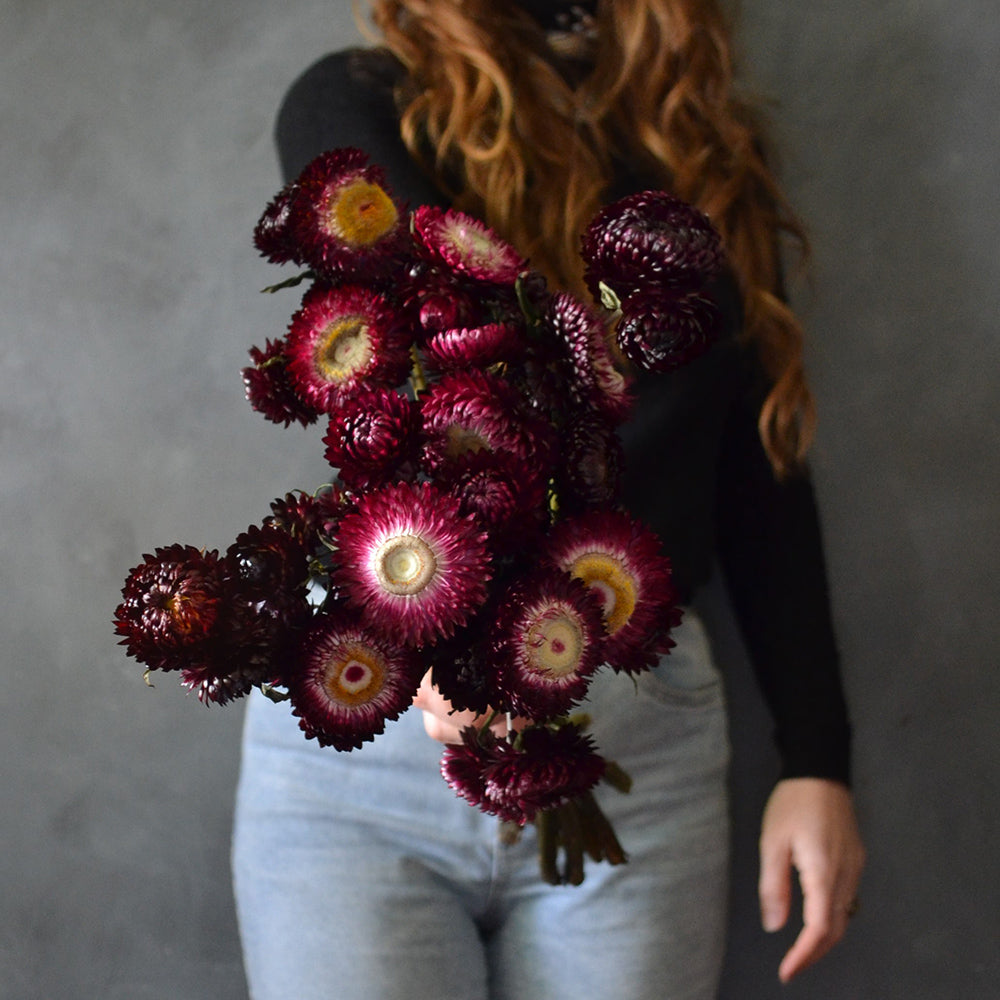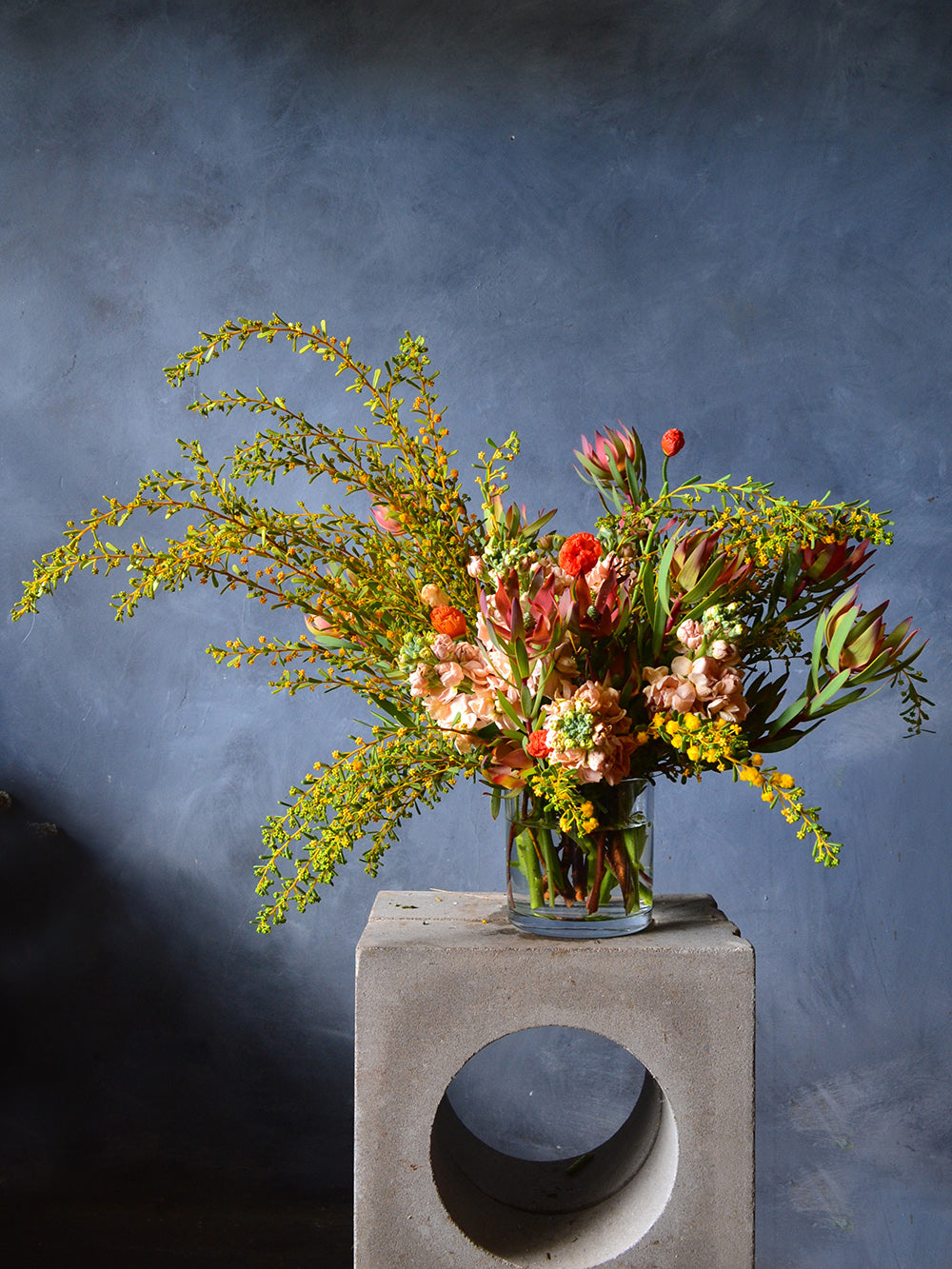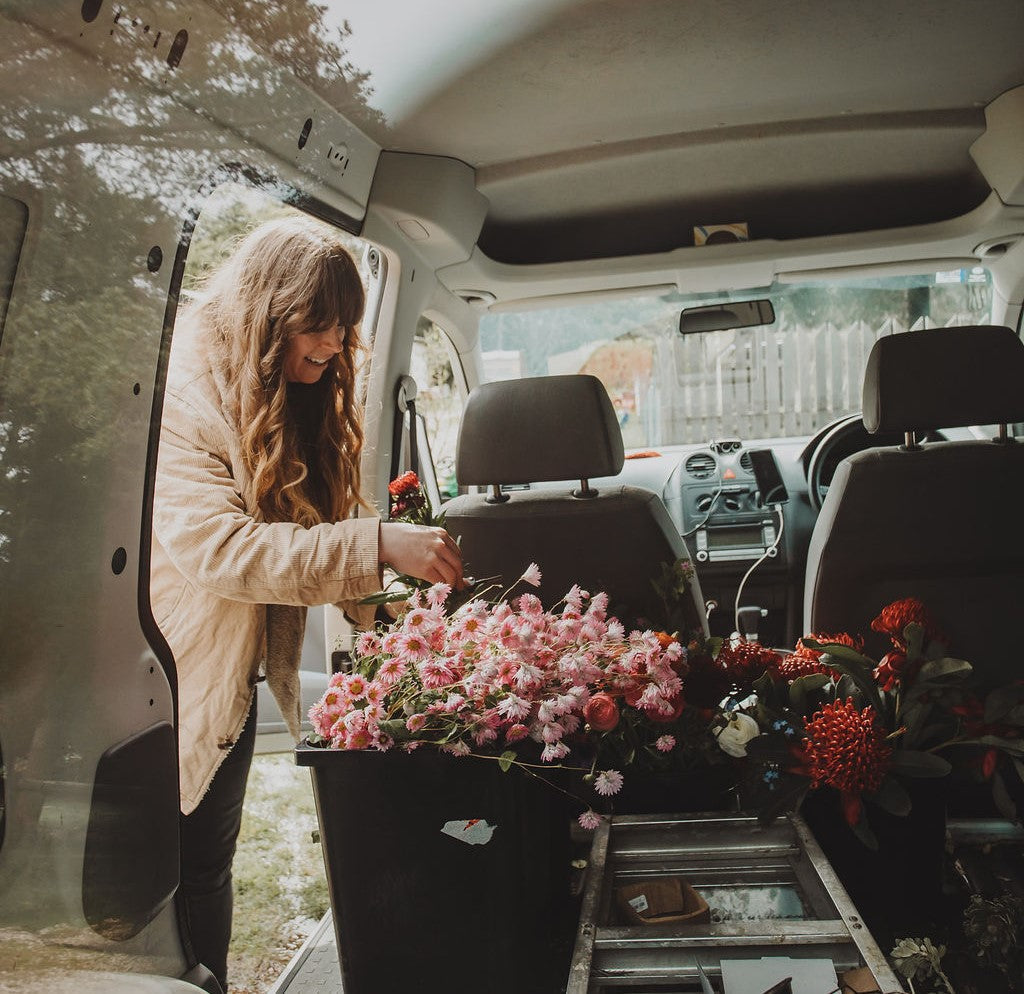As florists, we come into contact with the natural world every day. From visiting growers to simply arranging stems, our interaction with nature is constant.
However, somewhere along the line we got disconnected. We lost the bigger picture of the product we are working with and what the implications of meddling with it were to the environment - and ourselves.
Floristry is now a worldwide commodity (did you know most of our roses come from South America and Africa?), but we also seem to have lost our appreciation for their natural beauty.
With the introduction of new trends such as painting, dying and bleaching flowers, the artist in us took over. We got excited and bought up all this new product, relishing in the creative possibilities and never thinking twice about how they got this way.
Take bleached varieties for example. How do you take a fresh, strong stem and make it pure white and everlasting without it suffering any structural damage? There are some in depth insights into this covered in this Sustainable Flowers Podcast, of which I will discuss the basic principals here.
To bleach a piece of ruscus you can use any of the following chemicals, with the addition of some acid; hypochlorites, sodium chlorite, peroxide, hydrosulphites, or borohydride. Which are basically ingredients that you might find in bleach. All done, right?
Not exactly. After this process the stem may discolour and yellow over time, so it would be a good idea to add some barium hydroxide, calcium hydroxide, sodium bicarbonate, titanium dioxide or zinc oxide. And you're not done yet - in order to remove the 'chemical smell' (how inconvenient) you would need to add more chemicals, and finally to ensure structural integrity and prevent it from being brittle after all that processing you better add - yup, MORE CHEMICALS.
All of this just to make it white??

Bleached flowers from California wholesaler Florabundance.
What's more, you won't find any of this on the label, actually come to think of it none of these products are labelled at all. I would guess that florists and wholesalers possibly have no idea that what they're selling is not (as the name would suggest) simply 'bleached'. It's been incredibly hard to find information on it too, however Linda from Little Farmhouse Flowers has a wonderful in-depth article you can read here.
So that's bleached flowers. But I also wanted to chat about imported roses - yes it's a thing. Most people are surprised when I tell them a good portion of our roses come from overseas. It seems impossible; how do they stay fresh?
You may have even purchased some without knowing it. Over the last few years they have gained huge popularity with florists for their large flower heads, and with customers for their colours and size. They seemed like an incredible addition to our store offerings and the amount coming into Australia quickly grew.
But I would really like to know how a rose can be grown in a country that is 14,500km away, cut, packaged, flown to Australia, fumigated on arrival (more on this in a moment), transported to wholesalers, and then recut and sold to florists for the same price as a local rose?
Someone is definitely getting a bad deal here.
If the carbon footprint of the transport and refrigeration don't turn you off, the method of treating them at the border might. In order to keep Australia safe from biosecurity risks, roses must be 'devitalised', a process that involves dipping them up to their heads in glyphosate for 20 minutes.
There are mixed reviews about the effect glyphosate has on human health and it's unclear which ones are truly reliable, as there is a lot at stake for the company that owns it, Bayer, who have lost their last 3 court cases claiming high levels of glyphosate exposure causes non-hodgkin's lymphoma and face more than 42,000 more lawsuits.
What I can tell you is from my own past experience with imported roses, and that is this. When you are unpacking them they definitely have a distinct, chemical-like smell. If you are in an enclosed space with them you will quickly develop a headache. And if your fingers are pricked with a thorn your knuckles ache for days. This definitely does not happen with local roses.
I personally have also found spiders when unpacking imported roses in the past, meaning that aside from the use of this controversial chemical as a treatment, the effectiveness of the fumigation is not guaranteed.

It's this lesser known side of our industry that taints an otherwise beautiful trade. Why do we need to go to these lengths, messing with nature for the sake of a white leaf or slightly larger rose heads? Can we not appreciate the stems as they are, chemical free? Is a rose not still a stunning flower regardless of it's size?
Thankfully, there is a truly simple solution to keep chemically treated flowers out of our homes and workrooms. We are so lucky to live in Victoria when it comes to growing cut flowers.
Having four distinct seasons means we can grow a much wider selection of flowers than the tropical northern states. We have a constantly shifting variety of locally grown flowers to choose from that have a tiny carbon footprint and are have so much natural beauty they do not need to be altered at all.
In fact approximately 58% of all the flowers grown in Australia are grown right here in Victoria.


Spot the difference: 1). Imported Cappuccino Rose from Lou Flower Studio, 2). locally grown Soul Sister from SOHO Rose Farm.
By choosing flowers from local farms we are supporting our own communities, keeping our local economy strong and keeping our hard earned money in Australia. As illustrated above, we can source the same flowers locally without the carbon footprint, chemical treatments or questionable business practices (remember the price point is the same, so what are the staff in Kenya and Columbia being paid..?).
Whilst we already have an incredible selection of cut bunches, the more we buy from our amazing farms the better the local flower industry becomes, meaning varieties currently oversaturating the market from overseas can be grown more abundantly here.
I think you'll agree that we do not need flowers to be imported, simply for the sake of having roses year round and peonies in May. For all the detriment it causes to the environment is it really worth it? Please ask your florist where the flowers have come from, and resist the temptation to buy imports, bleached, painted and dyed flowers.
If you are interested in the preserved varieties but don't want all the nasties, many of them can be naturally dried, and some even maintain their natural colour. We have an extensive selection of seasonal, naturally dried flowers available!
For an industry that works with so much natural beauty and already has an incredible quality of product to design with, we sure have strayed a long way. Let's re-ignite the love for natural, local and seasonal.
Let's give ourselves a chance to miss roses when they are out of season, but to discover other beautiful flowers that are blooming instead.
If you would like to know more about the current state of the flower industry and what you can do to help us change it, please follow the links in this article or send us a message - we are always happy to answer questions about this!
Botany x
References:
Department of Agriculture: https://www.agriculture.gov.au/
The Sustainable Flowers Podcast: http://sustainableflowerspodcast
Little Farmhouse Flowers: https://www.littlefarmhouseflowers.com/
Department of Primary Industries W.A: https://www.agric.wa.gov.au/
Statista: www.statista.com




